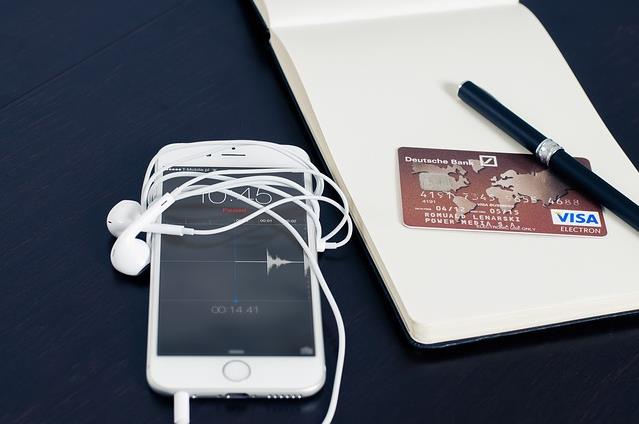Essential Measures You Can Take to Avoid Payment Fraud
Identity theft and account takeovers are prevalent nowadays. Here are some measures you can apply to prevent payment fraud on your website.
The Association of Certified Examiners says that 50% of small businesses can fall victim to fraudulent transactions at some point. And every fraud payment can cause them an average of $114,000. With the hacking techniques such as phishing and drive-by download getting more advanced, here's how your company can prevent payment fraud.
1. Advanced Analytics
This is a sophisticated method that uses raw data, allowing companies to gain insights and conclusions about the customers' behaviour, interaction, and preferences. In turn, they can improve their marketing campaign to grow their business. One can apply advanced analytics in banking, e-commerce, agriculture and farming, education, and public sectors.
The four categories of advanced analytics include:
Reporting. Converts raw data to form a comprehensive conclusion that identifies suspicious activities.
Descriptive analytics. Helps identify customer's behaviour online by processing and analyzing patterns collected from the reporting process.
Predictive analytics. Provides valuable insights for future actions and scenarios using pattern analysis.
Prescriptive analytics. Evaluates the data gathered from descriptive analytics to determine what the next trend will be like.
2. PCI Compliance
The Payment Card Industry Security Standards Council (PCI SSC), the forum for international brands such as American Express, Visa, and MasterCard, has created a set of policies to protect customers' interests.
This is not optional but strict compliance for e-commerce businesses. And know that payment processors such as PayPal and BigCommerce can only help you if you abide by PCI Compliance. The solutions they offer to businesses of different sizes are integrated with this standard.
3. Managing your Risks
By applying the cybersecurity measures on your website, you can keep your business and customers protected. That may include the combination of endpoint security solutions, website application updates, and HTTPS. For first time buyers, you may require a verification process to ensure that the transaction is legit.
4. Monitor online transactions
To prevent payment fraud, installing a data monitoring system in your database is recommended. This allows you to see inconsistencies in information such as physical location, IP address, and shipping address. If you have been in the business for a while, you have probably known your regular customers. Is there anything in their suspicious activities? Does the customer purchase more than usual? All that customer spending questions can be easily answered with a data monitoring system.
5. Set Limits
Most companies minimize damage by setting limits on purchases. When the customer has reached their limits for the day, they cannot make another transaction within the next 24 hours. If the credit card falls in the wrong hand, the chances of it getting maxed out are big.
6. Use Address Verification System or (AVS)
This is a fraud tool that helps companies verify if the address is fake. It's been used by many e-commerce companies. When the address appears suspicious based on the AVS results, you can require an ID verification. And you can easily tell if the ID is legit or edited anyway.
7. Use two-factor authentication
Before the proliferation of sophisticated hacking techniques, a strong password was enough to protect personal accounts. But that's a thing of the past now. Today, having multiple layers of security isn't an option but a necessity.
Use two-factor authentication, the second layer of security that requires a code verification to confirm if the transaction is legit. This prevents payment fraud because, without the code provided by the system, the transaction cannot proceed even with the username and passwords. Also, this notifies the customer of the unauthorized access to their account, making them aware.
8. Keep software up-to-date
And outdated software is prone to vulnerabilities, increasing the chances of your website falling victim to identity theft. Hackers use zero-day malware to scan for website vulnerabilities. Before you know it, your customers' personal information has already been hacked, causing a lot of damage to sales and your reputation.
By installing software updates, not only can you enhance your website's security features, but it also gets rid of existing bugs and errors. So when software updates become available, install them right away.
9. Look for the Card Verification Value (CVV)
The PCI compliance prohibits you from storing CVV on your database. This means that even though you have asked it from your customers before, it will automatically be deleted within a certain period. It's an effective way to prevent fraudulent transactions, as hackers can't provide the CVV without getting hold of the physical credit card.
Indeed, payment fraud is proliferating, but you don't have to fall victim to it. By doing the best practices, you can protect your business and customers.
Related Posts
Today maintaining office security has become an important concern for businesses of all sizes.
Tech Support is also known as Technical Support Services.According to a common description, it is generally used to supply technology-related assistance to the users of pc, laptops, smartphones, televisions, or various software, electronic and mechanical products.
It’s essential to keep your website secure even if you don’t have any sensitive data that needs to be protected. Keep reading to find out more about the best practices for website security.
Identity theft and account takeovers are prevalent nowadays. Here are some measures you can apply to prevent payment fraud on your website.
Everyone is welcoming technological innovations with open arms. Entrepreneurs are reaping benefits of online marketing, while customers are happy to make online payments.

















Comments
comments powered by Disqus